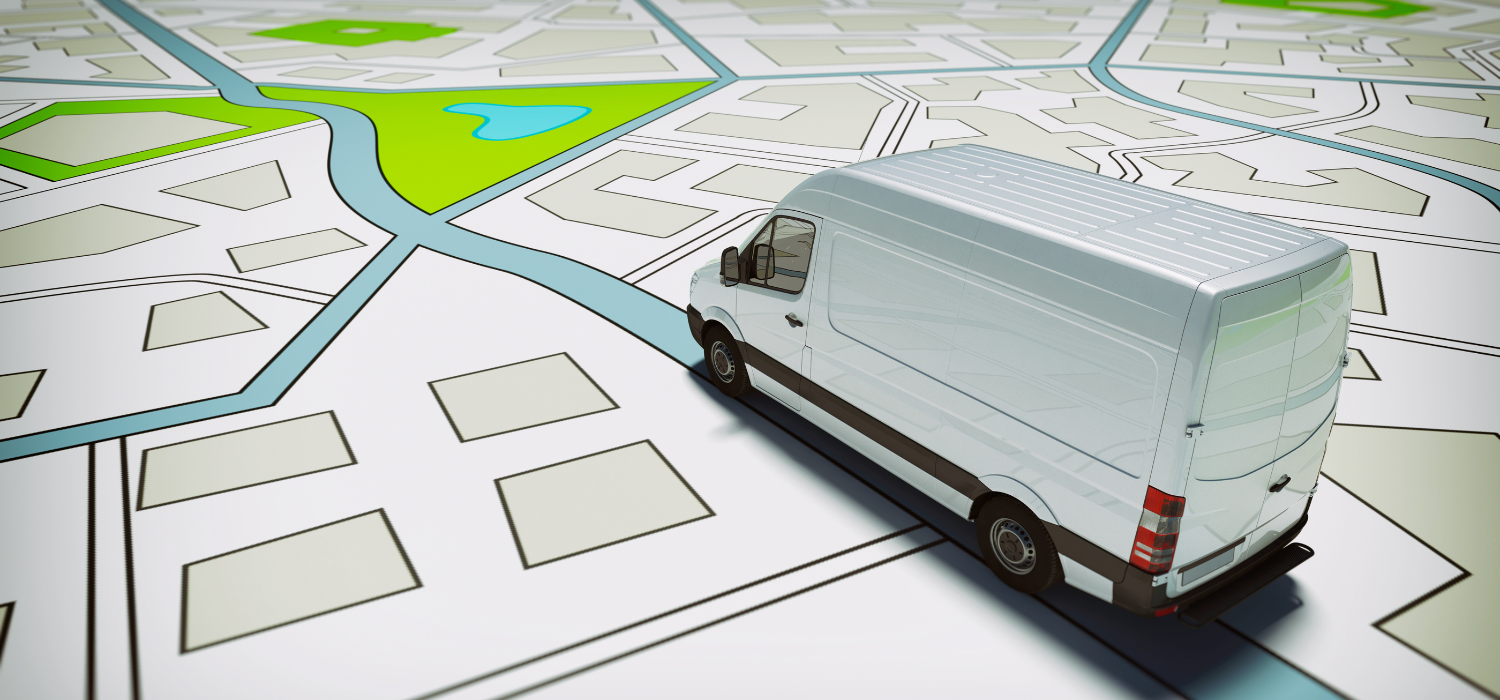When we talk about urban logistics, we also cannot fail to mention Curbside Management, which is the management of the so-called “curbside zone,” the demarcation zone between the street and the pedestrian area. In other words, the sidewalks.
The curbside zone is mostly intended for private car parking, but the demand for diversified use is growing rapidly“generating conflicts among users”, explains Paola Cossu, CEO of FIT Consulting Srl. We interviewed her for you to better understand what this is all about and more importantly what the benefits are for citizens and eCommerce.
Let’s start by telling what benefits can be obtained from efficient use of the Curbside zone?
The growing demand for diversified curbside zone use has generated conflicts among users. This has necessitated the introduction of management systems based on usage priorities (with real-time if not “predictive” data), defined according to the main functions that characterize the urban area concerned. The “curb community” thus succeeds in mitigating conflicts between new and traditional antagonists, such as between those who use bike lanes and those who have to deliver or pick up goods, avoiding serious inefficiencies in terms of operations, externalities and security of the urban system. New trends, such as eCommerce, the sharing economy, and new vehicle and infrastructure technologies (hardward and software), have had a disruptive impact on mobility. Think of autonomous vehicles potentially reducing parking demand by inducing a major evolution in the use of urban infrastructure. Thus, there has been a need to manage the curbside as a valuable public asset.
For e-commerce in particular, curbside management represents an opportunity: couriers are subject to stress due to the unavailability of parking areas. It often happens that they are forced to make use of paid parking spaces located far from the end customer, or they park double-parked or in crosswalks, unduly occupying public land, due to the need to deliver a cell phone case within a day of purchase. In addition, because of Covid we have found ourselves catering to phenomena such as bulk buying, that is, purchases in large quantities. The “city system” has thus become inefficient, going haywire as everyone contributes to generating traffic and pollution, but there is hardly a perception that they are the cause of the problem and often expect others to solve it, as well as being convinced that they are entitled regardless to the use of public space, which is often scarce. The curbside area should therefore be treated in all respects as urban “real estate.” In this sense, curbside management allows prioritized, flexible, and dynamic management of the more conventional functions of the street (transportation) and other operations (e.g., deliveries and pickups of goods, electric recharges).
Optimal curbside zone management can generate significant value, especially as people or goods arrive at their destinations in areas of high demand for such spaces. There are tools such as “Dynamic Access Controlling” systems that help manage access based on tokens for digital identification and authentication. Some important issues include metrics and monitoring systems to measure performance in curbside use and implications from a regulatory perspective (affecting the local authority) and the coding of revenue streams for each stakeholder category. Curbside management, to be optimally valued, therefore requires to inventory in a structured way the information, optimize, allocate and manage the affected space in order to allow accessibility to a variety of users simultaneously occupying this area based on a priority system that is flexible and dynamic (real-time).
How did the Pandemic affect the use of these spaces?
In the early days of the pandemic, the discussion was about widening sidewalks and crosswalks to meet social spacing. In the post-pandemic, the discussion is about the possibilities of redesigning streets to meet new needs. The growing demand for space on and near the sidewalk requires revisiting conventional parking to meet new needs for delivery and free space for pedestrians. Curb zoning has enormous potential to reduce congestion, double the availability of zones for loading and unloading operations, and thus generate new revenue opportunities for cities and businesses. Since the beginning of the Pandemic, consumers have been using the curbside to pick up food ordered at a restaurant or a good purchased at a store (curbside pick-up) because of the mandatory social spacing. Retailers then smoothly and effectively adopted digital and physical systems, finding immediate customer gratification, easy app use and convenience, as well as a significant increase in customer loyalty. A survey done by Mobiquity, which develops digital curbside pickup solutions, of more than 400 customers who were asked what they thought of curbside pickup solutions found that 65 percent believed that social distancing induced new ways of smart shopping, while 67 percent said they would continue to use curbside pickup even after Covid restrictions. In addition, there was a 125% increase in overall shopping volume.
What are the obstacles to efficient use of this resource to date?
The main difficulties encountered by European cities in the efficient use of the curb side originated from disruptive changes in consumer habits, new mobility patterns (such as micro-mobility, e-scooters, robots), and the effects of Covid-19. Together they have generated tremendous growth in the number of deliveries and increased pressure on the mobility system, increasingly limiting the already scarce availability of dedicated areas for goods delivery operations. Policy makers need to take up the challenge toward a better understanding of the dynamics of new demand, infrastructural availability and different urban functions (commercial, industrial, residential, etc.), in order to outline an appropriate system of rules and measures that better fit the new needs, as well as equipping the city with increasingly advanced tools. At the same time, all stakeholders are tasked with working together for the good of the community to codify curbside opportunities and limit conflicts. Often the curbside has a fragmented, analog and rarely updated information database. The suboptimal organization of data limits the ability of local authorities to adequately plan for its management and monitoring of implemented measures and rules. The private sector has much more up-to-date data but not easily accessible to local authorities and planners. Curbside use metrics are rarely coordinated and the results not always relevant for making decisions in line with real demand needs. For example, many cities do not have real-time data regarding parking turnover. In contrast, apps with automatic payments are able to provide a real-time database. Transparency and data exchange in “trusted” environments among stakeholders, for example with Mobility Data Spaces and the use of open data, are important levers for optimal curbside management in the immediate future.
How can Lockers and Pickup Points be integrated into these new models?
Certainly an important benefit of Lockers is the elimination of empty deliveries, including returns, and the resulting reduction in pollutant emissions and congestion. In Poland, for example, smart lockers get to pollute up to 1/3 less than home delivery. The first crucial aspect to consider is the consumer’s propensity toward the choice of using the locker. Therefore, it is necessary for e-retailers to equip themselves with emission calculation systems to offer sustainable delivery and return options and make the choice of the consumer who buys online responsible, informed, and conscious. It must be said, however, that those who are in the habit of buying online do not always have the will to change their habits in favor of a more sustainable system. In Germany, for example, although the parcel locker network is dense and efficient, 90 percent of e-purchasers prefer home delivery. Should delivery not meet their expectations, however, there is a tendency to switch e-commerce platforms that can offer conditions closer to their needs.
Regarding Pickup Points, proximity logistics is undoubtedly a winning solution when thinking about an efficient and sustainable last-mile system. The arrangement of urban micro-hubs and the omnichannelality offered by online platforms with geo-referencing hotspots for pickup and delivery of purchased goods, provided with route optimization algorithms, such as Gel Proximity, facilitate in no small measure the collaboration between the public administration and different information systems, such as parking, charging infrastructure, delivery information, etc. Finally, I would like to mention other virtuous examples in Europe such as Mobility Hubs, centers for sustainable mobility. These are urban platforms equipped with an integrated system of services, such as charging stations for electric vehicles, pick-up and delivery points for e-commerce, kiosks, availability of cargo bikes for last-mile deliveries. In the Belgian city of Leuven, for example, 50 “mobility hubs” funded by the European project “Smart Shared Green Mobility Hubs” will be installed over the next few years.
What additional opportunities does curbside management offer European cities?
The (sometimes submerged) value of curbside can push toward a new governance of the urban mobility system by fostering collaboration and a culture of co-design and sharing, strengthening relationships and trust between public authorities, citizens and companies-including logistics and transportation companies-with a vision of the city as a service, meeting current demand needs, but also anticipating the effects of disruptive new trends such as “quick commerce.” To achieve the goal, it is necessary to have a people-centered focus, managing mobility on roads and curbside based on functional priorities, taking into account that the city benefits from the diversity of people and the functions they individually and collectively perform. Charges can then also be adopted according to the type of services, time and place, which are based on usage, encouraging the sharing of services. This requires collaboration among different local authorities and active stakeholder involvement so that regulation and technologies can increase the efficiency of curbside management.
What role does freight mobility play in the cities of the future?
With e-commerce, there are no more limits. Everything is fluid and unpredictable. Everything is possible, virtual and (almost) everything available. E-commerce has changed the way people shop: everything and now. This has required and continues to require an extreme form of demand for flexibility and delivery to any location, the ability to change plans, the expectation of not paying for delivery and return by the buyer. But the question is, at what cost? What are the consequences for service providers, consumers, administrators, city planners and citizens? The last mile is the most expensive slice of the entire supply chain (over 50 percent of the total cost), considering that deliveries are now made directly to the end consumer rather than to stores. New technologies and reward models (not just coercive or punitive), as well as proximity logistics, enable organizational transformation to meet increasingly demanding demand. The digital transition can facilitate mutualistic use of spaces by zeroing in on conflicts between those who use the same spaces on a daily basis at the same times of day, while also enhancing from a real estate perspective the areas involved. It is also important to facilitate mutually beneficial models of cooperation among stakeholders by encouraging trusting relationships between the public and private sectors and between operators in the same supply chains, i.e., competitors.
What policies should be adopted to improve the impact on the environment and the city?
Forward-thinking cities and the mobility and logistics industry are on a mission to strengthen collaboration, co-design, promotion and sharing of data-driven solutions, as well as optimize the use of space to align competing individual interests and improve people’s quality of life. The challenge is proximity logistics and 15-minute cities where people are positioned at the center of urban transformation. People living in cities should have access to essential urban services that can be reached in close to 15 minutes on foot or by bicycle, making urban areas independent, smart and interconnected multipurpose hubs. Improving the user experience and finding effective solutions involves a better understanding of priorities and adequate consideration of new demand and its needs. The future of mobility should include actions to establish new models of collaboration with private operators and encourage the use of sustainable/green financing schemes. It is also important to create tools and pathways to increase capacity and knowledge on data and the use of new technologies, such as Digital Twin and Artificial Intelligence. Digital Twins are rapidly developing and can integrate different digital aspects of cities for better decision making in urban mobility planning in municipalities and regions and to distance themselves from transportation based solely on the use of fossil fuels.
Finally, the Urban Plans for Sustainable Logistics (PULS) promoted by the European Commission are tools that enable planners to get hold of targeted information regarding measures to be implemented on specific urban logistics functions. We are now finally in a “new normal,” positioned on a positive horizon. There are prospects to start redirecting priorities in a more targeted way by rediscovering the benefits of empathy, trust, collaboration, fostering new social models based on good – and more conscious – intentions, the “green fuel” for sustainable and shared development in the near future.
We thank Paola Cossu, CEO FIT Consulting, and look forward to the next interview.












